Ford Escape Vs Mazda CX-5: Which Compact Crossover is the Value Champ?

Compact crossovers are today’s family cars of choice for many drivers.
They’re easy to like for passenger space similar to that of a mid-size sedan, along with generous cargo room, but often in a shorter vehicle that can be easier to maneuver in busy city driving.
And you may also be drawn to a compact crossover for its available all-wheel drive and extra ground clearance compared to a car, both of which add capability in winter driving and when heading off paved highways to reach a cottage or campground.
Get a Quote on a New Ford Escape or Mazda CX-5In this comparison, we’re lining up two of the marketplace’s most compelling compact crossover SUV models.

The Ford Escape is one of the oldest nameplates in the segment, with Ford’s truck expertise having helped make the Escape a household name. As we write this, the Ford Escape is one of just a handful of compact crossover models you can buy with hybrid powertrains, including a plug-in model that can cover city-driving distances on electricity alone.

This time, the Escape goes up against the Mazda CX-5. It is a newer player in this category, having been introduced in the early 2010s, but it has evolved into a vehicle with an upscale look and feel that helps set it apart from its competition. To capitalize on that, Mazda offers the CX-5 with some luxury options uncharacteristic for the class.
Both of these well-executed vehicles offer a lot of value for your dollar, so read on and we’ll help you unpack which one is better at the things you expect from a compact SUV.
Cabin Space

Escape: Ford says the 2021 Escape offers front-seat occupants 40 in. of headroom and a maximum of 42.4 in (1,077 mm). of legroom.
Your rear-seat occupants get 39.3 in. (998 mm) of headroom, and up to 40.7 in. (1,033 mm) of legroom; however, there is less space in the rear of the Escape’s hybrid and plug-in hybrid models, where passengers get 38.9 in. (988 mm)

CX-5: In the 2021 Mazda CX-5, you and your front passenger get 39.7 in. (1,008 mm) of headroom in base models or 39.3 in.(998 mm) in trims with the optional sunroof. Front-seat legroom measures 41 in. (1,041 mm)
Rear-seat riders in the CX-5 benefit from 39 in. (990 mm) of headroom, which is unaffected by the presence of the sunroof, and they get 39.6 in. (1,005 mm) of legroom.
Bottom Line: Some of the Ford Escape’s advantages are narrow in this category, but nonetheless it offers more generous head- and legroom measurements for all seating positions and takes the win.
Fuel Economy

Escape: The most fuel-efficient version of the Escape is the PHEV, whose EPA combined (city and highway) gas and electric estimate is 105 MPGe. When the battery’s charge runs out and the Escape PHEV transitions to regular hybrid operation, its combined fuel economy estimate is 40 mpg.
In the regular Escape Hybrid, FWD versions are rated for 44 mpg city and 37 mpg highway, and with AWD, those ratings are 43 mpg city and 37 mpg highway.
Next up is the Escape’s 1.5L turbocharged three-cylinder engine. Its fuel economy estimates are 28 mpg city and 34 mpg highway with front-wheel drive, and 26 mpg city and 31 mpg highway.
Finally, the 2.0L EcoBoost turbocharged four-cylinder’s ratings are 23 mpg in city driving and 31 mpg on the highway.

CX-5: The Mazda CX-5’s fuel economy estimates start at 25 mpg city and 31 mpg highway for the 2.5L non-turbo engine with FWD. With AWD, the 2.5L non-turbo is rated for 24 mpg city and 30 mpg highway. With the turbocharged engine, estimates for FWD models are 23 mpg in city driving, and 28 mpg on the highway, and AWD versions are rated for 22 mpg city, and 27 mpg highway.
Bottom Line: The Ford Escape has the obvious advantage here with its available super-thrifty hybrid powertrains. But even if you take them out of the picture, the Escape’s gasoline engines promise better fuel economy than those in the Mazda CX-5.
Powertrains

Escape: In the Ford Escape, you get a choice of four distinct powertrains. First is a 1.5L turbocharged EcoBoost three-cylinder gas engine that generates 181 hp and 190 lb-ft of torque. Next on the list is a 2.0L EcoBoost turbo four-cylinder gas engine with 250 hp and 280 lb-ft of torque.
After that, you can choose from two hybrid powertrains. The standard gas-electric one combines a 2.5L four-cylinder with electric power, or you can upgrade to a plug-in hybrid (PHEV) version that can run on electricity alone with a fully charged battery or will operate as a gas-electric hybrid when that charge runs out. Ford says both the Escape Hybrid and PHEV derive 200 hp from their gas-electric powertrains, but doesn’t say what the total torque output is.
SEE ALSO: 2020 Ford Escape vs 2019 Mazda CX-5 ComparisonGasoline-powered Escape models use an eight-speed automatic transmission and front- or all-wheel drive. Escape Hybrid and PHEV get a continuously variably transmission. Hybrid models are front- or all-wheel drive, but PHEV models are front-wheel drive only.

CX-5: In the Mazda CX-5, gasoline is the only power source. Most trims use a 2.5L four-cylinder engine that makes 187 hp and 186 lb-ft of torque, while uplevel versions get a turbocharged 2.5L four-cylinder that makes as much as 250 hp and 320 lb-ft of torque on premium gasoline, or 227 hp and 310 lb-ft on regular-grade gas.
Both engines come standard with a six-speed automatic transmission and front-wheel drive. AWD is an option with both engines, and is standard in the CX-5’s top trim levels.
Bottom Line: The Ford Escape gets the nod in this category for offering more variety in terms of powertrain choices, with two hybrid configurations broadening the car’s appeal to attract fans of electrification.
Cargo and Towing
Escape: In gas-powered versions of the 2021 Ford Escape, you get as much as 37.5 cu. ft. (1,061 liters) of cargo space behind the rear seats, with the sliding rear seats positioned all the way forward. With the seats in their rearmost position, you get 33.5 cu. ft. (948 liters) of space. You can also fold the rear seat down to 65.4 cu. ft. (1,850 liters) of cargo volume behind the front seats.
Those figures are all smaller for the hybrid and PHEV models. They can accommodate 30.7 (868 liters) to 34.4 cu. ft. (liters) of cargo behind the rear seat depending on its position. And with the second row folded, maximum cargo capacity is 60.8 cu. ft. (1,720 liters)
SEE ALSO: 2020 Ford Escape Hybrid vs 2020 Toyota RAV4 HybridFord says you can tow up to 3,500 lbs with an Escape fitted with the 2.0L turbocharged EcoBoost engine and AWD. The Escape Hybrid and Plug-in Hybrid versions are rated to tow 1,500 lbs. Ford does not list a tow rating for the 1.5L engine.
CX-5: The 2021 Mazda CX-5 offers 30.9 cu. ft. (874 liters) of cargo volume behind its rear seat, and a maximum of 59.6 cu. ft. (1,686 liters) behind the front seat, when the rear seat is folded away.
The CX-5’s towing capacity is 2,000 lbs regardless of engine choice.
Bottom Line: The Ford Escape is the easy winner in this category. Its sliding rear seat adds flexibility and cargo space, and even though hybrid versions lose some cargo space, they are still roomier than the Mazda CX-5.
Safety

Escape: In the Ford Escape, the base S trim comes with Ford’s Co-Pilot360 suite of driver assists, including blind-spot monitoring, rear cross-traffic alert, automatic high beams, lane-keeping assist, lane-keeping alert, and forward-collision warning with automatic braking and pedestrian detection.
SEL trim adds backup sensors. The top-line Titanium trim gains LED headlights, active park assist, adaptive cruise control with stop-and-go, speed sign recognition, lane centering, and evasive steering assist.

CX-5: Mazda equips all CX-5 trim levels with a package of active driver safety assists comprising blind-spot monitoring, rear cross-traffic alert, radar cruise with stop and go, collision and pedestrian detection with brake support, lane departure warning, lane keep assist, and LED headlights with automatic high beams. The only additions come in the Grand Touring trim level, which adds adaptive headlights, and the Signature trim level, which gains front and rear parking sensors, a 360-degree surround-view monitor, driver attention alert, and rear collision detection with brake support.
Bottom Line: Mazda is more generous with driver safety assists, including radar cruise with stop-and-go in the CX-5 in the base model, while the Escape doesn’t offer that until the Escape’s top Titanium trim. Mazda gets a narrow win in this category.
Tech and Features

Escape: Notable standard features included in the entry-level Escape S include LED taillights, air conditioning, cruise control, automatic on/off headlights, a 4.2-inch driver info display, a 4.2-inch infotainment screen, Apple and Android smartphone integration, 17-inch steel wheels, and a six-speaker stereo.
SE trim’s significant additions are 17-inch aluminum wheels, satellite radio, passive keyless entry, and a Sync 3 infotainment system with an 8.0-inch touchscreen.

SEL gains fog lights, a power tailgate, 18-inch wheels, dual-zone automatic A/C, heated front seats, a 10-way power driver’s seat, a heated steering wheel, LED signature lighting, heated side mirrors, backup sensors, and remote engine start.
Finally, Titanium models get a hands-free tailgate, 19-inch wheels, ambient interior lighting, a digital gauge cluster, a power front passenger seat, auto-dimming rearview mirror, and LED headlights.

CX-5: The Mazda CX-5’s entry-grade Sport trim starts with auto on/off LED headlights, 17-inch alloy wheels, air conditioning, a 10.25-inch infotainment screen, and a four-speaker stereo.
Touring trim adds auto-leveling headlights, passive keyless entry, dual-zone automatic A/C, a six-way power driver’s seat, heated front seats, a six-speaker stereo, Apple and Android smartphone integration, and a 4.6-inch driver info display.

Carbon Edition trim is next, and it brings a power tailgate, auto-dimming rearview mirror, leather seats, 19-inch wheels, a sunroof, two front USB audio inputs, and two rear USB charging ports.
From there, Grand Touring trim adds steering-wheel-mounted paddle shifters, satellite radio, and a 7.0-inch digital gauge display.

Grand Touring Reserve builds on that with the turbocharged engine, heated rear seats, ventilated front seats, a heated steering wheel, and a head-up driver display.
At the top of the range is Signature trim, which comes with a frameless rearview mirror, traffic sign recognition, front and rear parking sensors, 360-degree surround-view cameras, a driver attention alert, and rear collision avoidance with automatic braking.
Bottom Line: As is the case with safety features, Mazda includes more cosmetic and convenience features in the CX-5’s base trim, like alloy wheels, LED headlights and a larger infotainment screen. From there, both the CX-5 and the Ford Escape add niceties at a similar rate as you move through their trims. But the CX-5’s extra standard kit gives it the win in this category.
Pricing

Escape: Ford prices the Escape to start at $26,800 in S trim, $28,280 for SE, $30,750 for SEL, and $37,300 for Titanium. Hybrid models begin with the $29,275 SE Hybrid, followed by the $31,745 SEL Hybrid, SE PHEV ($34,320), Titanium Hybrid ($34,845), SEL PHEV ($37,060), and Titanium PHEV ($40,130).
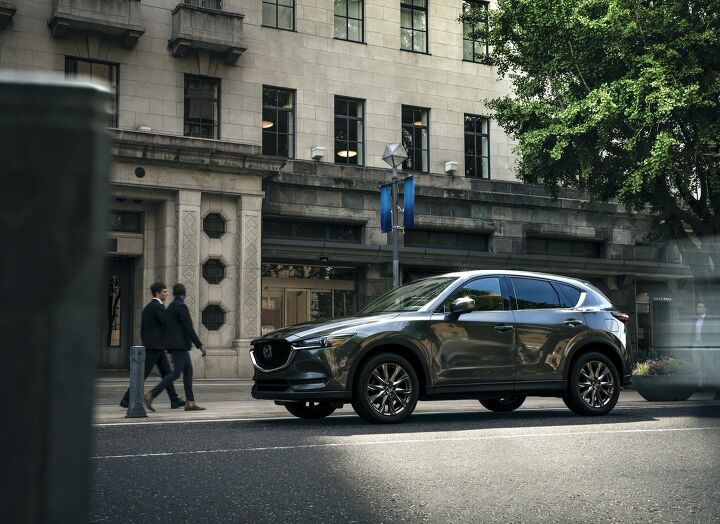
CX-5: Mazda’s pricing for the CX-5 kicks off at $26,545 in Sport trim, $28,285 for Touring trim, and $30,170 in Carbon Edition guise. A Carbon Edition Turbo, at $31,935, is the entry point for the CX-5’s turbocharged engine. Grand Touring, at $31,735, adds more equipment but reverts to the CX-5’s non-turbo engine. The $36,560 Grand Touring Reserve trim builds on Grand Touring with more equipment and the turbo engine, and the $38,680 Signature gets the most kit and is standard with the turbocharged engine.
Bottom Line: Prices for the Ford Escape and Mazda CX-5 are quite competitive when comparing low-end trims, but direct comparisons are more difficult as you begin considering posher trims and the Escape’s hybrid trim levels.
If you’re shopping for a base model of either of these vehicles, we give the win to the Mazda CX-5 for its extra features at a similar price. However, by the time you compare the CX-5 Signature and the Ford Escape Titanium PHEV, we think the Escape’s price looks more attractive for its combination of lots of features and a high-tech and efficient plug-in powertrain. Overall, we give Escape the win in this category.
Verdict: Ford Escape vs Mazda CX-5

If you’ve been following our category-by-category breakdown so far, you’ll have figured out that the Ford Escape is the overall winner in this comparison by winning five of our seven categories.
The Ford Escape is roomier than the CX-5, it offers more powertrain variety with two hybrid options, and the Escape promises better fuel economy even with its conventional gasoline engines. The Escape can also tow more and boasts more cargo volume, making it more practical than the CX-5.
If you want a vehicle that looks more expensive than it is, that may be enough to sway you to Mazda’s side, where you won’t go wrong with its engaging driving feel, upscale fit and finish, and useful interior.
However, if you’re after a well-designed small SUV with great interior space and thrifty fuel economy, the 2021 Ford Escape is the smarter choice by a significant margin.
Become an AutoGuide insider. Get the latest from the automotive world first by subscribing to our newsletter here.
More by Chris Chase














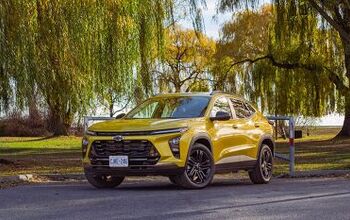


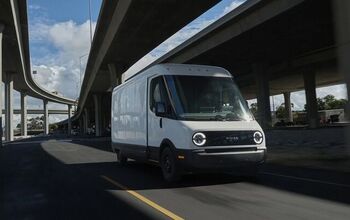




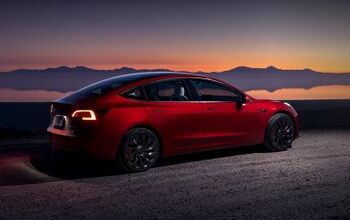



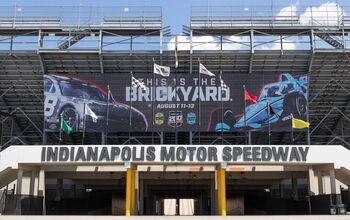
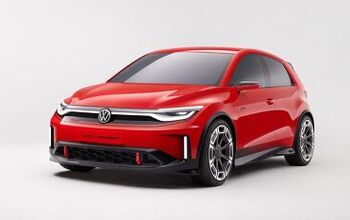



Comments
Join the conversation
prefer plug in hybrid, then regular hbrid